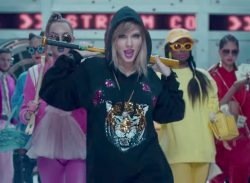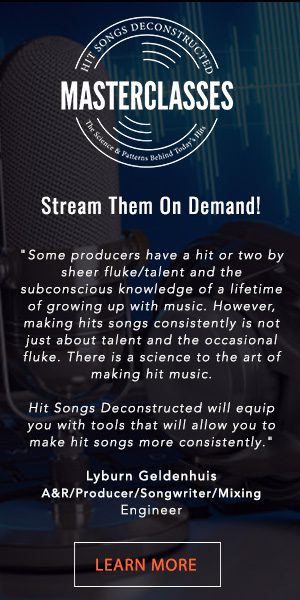Panned by some and heralded by others, Look What You Made Me Do, the Swift/Antonoff-penned track (with additional credits to Right Said Fred), broke a string of records, including the record for the most plays in a single day on Spotify.
While certain aspects of the song such as its Dance, Electropop and Hip Hop influences and adherence to the K.I.S.S. ME principle (Keep It Simple, Singable and Memorable) enable it to easily connect with a wide audience, there a host of qualities that help it stand out from the pack and get noticed. What follows are a few noteworthy examples:
Atypical Instrumentation and Vibe
The use of orchestral instrumentation in the Top 10 of the Hot 100 is quite rare – especially when defining the sound of an entire section, as is the case with Look What You Made Me Do in both the intro and second bridge. The fantasy vibe that the orchestral instrumentation imparts in the intro enables the song to easily cut through airwave clutter and grab the listener’s attention. It also does a great job of piquing curiosity as to what direction the song will take, and what the fantasy will be about.
Additionally, the combination of the fantasy orchestration and the dissonance that occurs at the end of the intro cleverly establishes and sums up the overall premise of the song – the old, sweet, “Pop princess” Taylor Swift is no more, and in her place is a new “smarter,” “harder” Taylor Swift who is ready to do battle with her enemies.
“Sexy” Vocals
The chorus vocals are heavily inspired by Right Said Fred’s 1991 hit, I’m Too Sexy – so much so that those writers were credited. The use of this vocal influence heightens the familiarity of the song while, at the same time, making it stand out.
Spoken Song-Defining Moment
With the exception of the occasional intro section, most Top 10 hits do not feature a spoken passage within their framework. Look What You Made Me Do, however, uses spoken dialog to great effect in the second bridge:
I’m sorry, the old Taylor can’t come to the phone right now…
Why?…
Oh…
‘Cause she’s dead!” (oh!)
Processed to sound like she’s speaking through a telephone or answering machine, this pronounced shift in delivery style coupled with the suspenseful pauses enables these song-defining lyrics to stand out in the scope of the song and connect with the listener at a heightened level.
Multiple Departure Sections
Most Top 10 charting hits include one particular section that provides a pronounced musical, vocal and/or lyrical departure relative to the other sections in the song, usually in the form of a bridge that occurs around two-thirds of the way in. Look What You Made Me Do, however, contains three:
- Verse 2, Stanza 2 (“The world moves on another day, another drama, drama…”)
- Bridge 1 (“I don’t trust nobody and nobody trusts me…”)
- Bridge 2 (“I’m sorry, the old Taylor can’t come to the phone right now…”)
While all three of these sections possess unique qualities that set them apart from the others and heighten engagement as a result, they possess familiar qualities as well, which enables them to easily connect.
Mood Contrast
Last but not least, compared to previous Taylor Swift hits such as Shake It Off, Blank Space and Wildest Dreams, Look What You Made Me Do is musically, vocally and lyrically darker. Swift’s new image contradicts what she has been known for, and enables the song to further stand out as a result.
************
To read the Hit Song Deconstructed Report Look What You Made Me Do Deconstructed, log in to your account or sign up for a free trial here.
About the Hit Song Deconstructed Report:
Our flagship report, it provides an unparalleled deep dive into the inner-workings of a current chart-topping hit, and leaves no stone unturned. Presented in a practical manner through a combination of charts, graphs, notation and commentary, the reader comes away with a full understanding of the what, how and why behind how the hit was written and produced, and gains a wealth of songwriting and production techniques to add to their toolbox. Among the many areas covered are song structure, energy, genres and influences, instruments and accompaniment, harmony, vocal production and melody, lyrics, rhymes, narrative, Top 10 benchmarking and more.
Readers can study the entire report, or hone in on one particular area of interest, such as vocal melody, across multiple reports.
************



